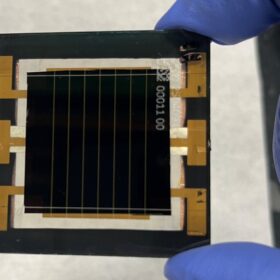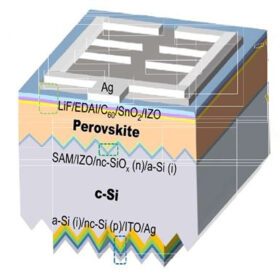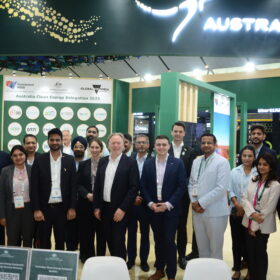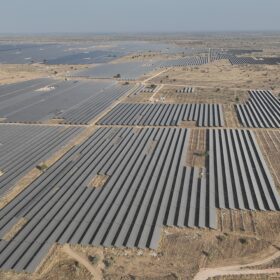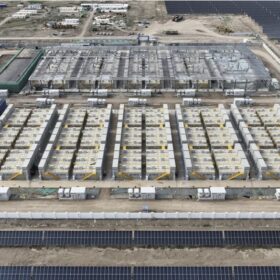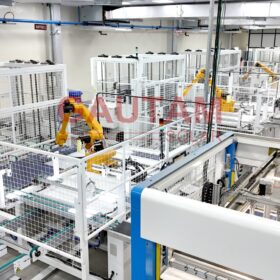“Energy storage will account for half our business within three years”: Geon vice president
Khushi Kabra, Vice President–Strategy at Geon (formerly Battrixx), speaks to pv magazine on pivoting from electric vehicle (EV) batteries to building a strong foothold in the energy storage space.
How is India’s power infrastructure evolving amid global supply chain shifts?
With renewable capacity expanding, grid upgrades underway, and policies fostering local supply chains, India is navigating a complex but promising energy transition.
NREL, CubicPV achieves 24% efficiency for perovskite mini solar module
A U.S.-based collaboration between the National Renewable Energy Laboratory (NREL) and CubicPV has yielded a perovskite minimodule with certified efficiency of 24.0%. The two noted that it is the first time a U.S. effort has set a record in the perovskite mini module category.
The Hydrogen Stream: IIT Madras, Hyundai to launch green hydrogen innovation centre
Hyundai Motor India Ltd (HMIL), in collaboration with IIT Madras, will establish a 65,000 sq. ft. green hydrogen innovation centre in Chennai, enabling research, development, and deployment of hydrogen technologies.
India’s emerging role in EV battery recycling: Creating a circular economy
India is well-placed to advance the e-mobility circular economy in Asia against the backdrop of the fast-growing market and recycling strategies. Adopting the 5Rs—Reduce, Reuse, Repurpose, Remanufacture, and Recycle—can help in reducing resource depletion and waste.
Longi unveils 34.58%-efficient tandem perovskite-silicon solar cell based on asymmetric self-assembled monolayer
In a new scientific paper published in nature, the Chinese manufacturer presented a new tandem perovskite-silicon solar cell based on a bottom cell with a heterojunction design. It also used a new type of self-assembled monolayer that reportedly reduces non-radiative recombination and increases cell efficiency.
Australian Clean Energy delegation visits India to further deepen their engagements
A 30-member Australian Clean Energy Delegation representing 22 companies, is visiting India from July 7 – 11, 2025 to showcase Australia’s innovative solutions across energy storage technologies, AI solutions for energy operations, solar technologies, green hydrogen, energy modelling and weather forecasting, education & capacity building and consulting.
First Solar uses quantum dots to boost module efficiency
Quantum dot technology promises to boost bifacial solar module output. The company entered into a supply agreement with specialist UbiQD.
Solarix Solar launches new terracotta solar panel
The Netherlands-based solar façade panel and mounting system provider has added a new terracotta rooftop module to its product range. It also announced it is expanding it sales network and boosting its manufacturing capacity after raising €5.5 million in financing.
India installed 17.4 GW utility-scale solar, 5.15 GW rooftop PV capacity in FY 2025: JMK Research
Rajasthan led the annual solar additions with 6.5 GW, followed by Gujarat (3.6 GW) and Maharashtra (2.3 GW).


